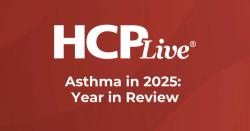Biomarkers in Shifting the Treatment Paradigm of Asthma - Episode 7
Novel Biomarkers for Biologic Targeted Mechanisms
Transcript: Thomas Casale, MD: Let me summarize and make sure that I have this right. What everybody is saying is that we have some biomarkers. There are eosinophils and pheno from point-of-care, because a lot of people don’t really use sputum. It helps to use inhaled corticosteroids and to maybe, in the patients that are more severe, use a biologic, but we don’t know which biologic, because they all work in those high biomarkers. Neither of those biomarkers, or any other biomarker, have been shown to track with treatment.
In other words, if I knock down your blood eosinophils, that doesn’t necessarily mean that you’ll get better. Because everybody that’s put on an IL-5 blocker, their eosinophils go down. But, yet, the numbers show that you only prevent about 50% of exacerbations. It sounds like we have a lot of work to do, and we’re still very concerned about that segment of the populations, albeit smaller than those that have T2-high asthma, but as for the patients that have no identified T2-high biomarkers—we know they don’t respond well to corticosteroids—either inhaled or oral. They don’t respond to the biologics that we have approved. Geoff mentioned in some of those people that are very severe, they may be a good candidate for bronchial thermoplasty or perhaps pushing anticholinergics or thinking about things like macrolide antibiotics. Does that sort of summarize where we’re at now with the state of the biomarkers and how we use them?
Geoffrey L. Chupp, MD: I agree, Tom, and I would just ask the question to the group, what do we have on the horizon in terms of biomarkers? I don't know that we really have anything on the horizon that’s going to really help us dissect the heterogeneity any better than allergy testing, eosinophils, and FeNO [fractional exhaled nitric oxide] and standard physiology. Can anybody comment on that?
Stanley Goldstein, MD: I agree with what Geoff just said. Even though you think there are some biomarkers and biologics that are yet to come out—specifically anti-TSLP [thymic stromal lymphopoietin]—but it’s not going to change the playing field at all, because you’re still dealing with T2-high asthma, versus the T2-low type. If you look at the biologics and biomarkers that have been picked for the T2-low asthma, it’s probably difficult to do studies because you don’t have enough patients with those specific characteristics. It’s sort of a box where you have all these others that are characterized as non—T2-high types, but there’s a lot of individualization in those patients, as well.
Michael E. Wechsler, MD, MMSc: Some of the biomarkers that have been tested, including periostin and dipeptidyl peptidase-4, were thought to reflect perhaps IL-13—mediated activity, and those didn't bear out in some of the anti–IL-13 clinical trials. Other things that people are looking at include urinary bromotyrosine, which might reflect type 2 inflammation. People are looking at other parts of the eosinophil pathway, eosinophil peroxidase, but none of those seem to be any better than looking at eosinophils themselves in the blood or in the sputum.
I agree with you about the non—type 2 biomarkers, and there seems to be a paucity of biomarkers that reflect non–type 2 asthma. In general, the way we define non–type 2 asthma is the absence of type 2 biomarkers. So, people are starting to look and see whether C-reactive protein [CRP] in the Severe Asthma Research Program looked at CRP levels, IL-6 levels, so see whether that might reflect a subset of patients with asthma that may respond to specific therapies. There are ongoing studies looking at some of those strategies in people with non–type 2 asthma.
Transcript Edited for Clarity



